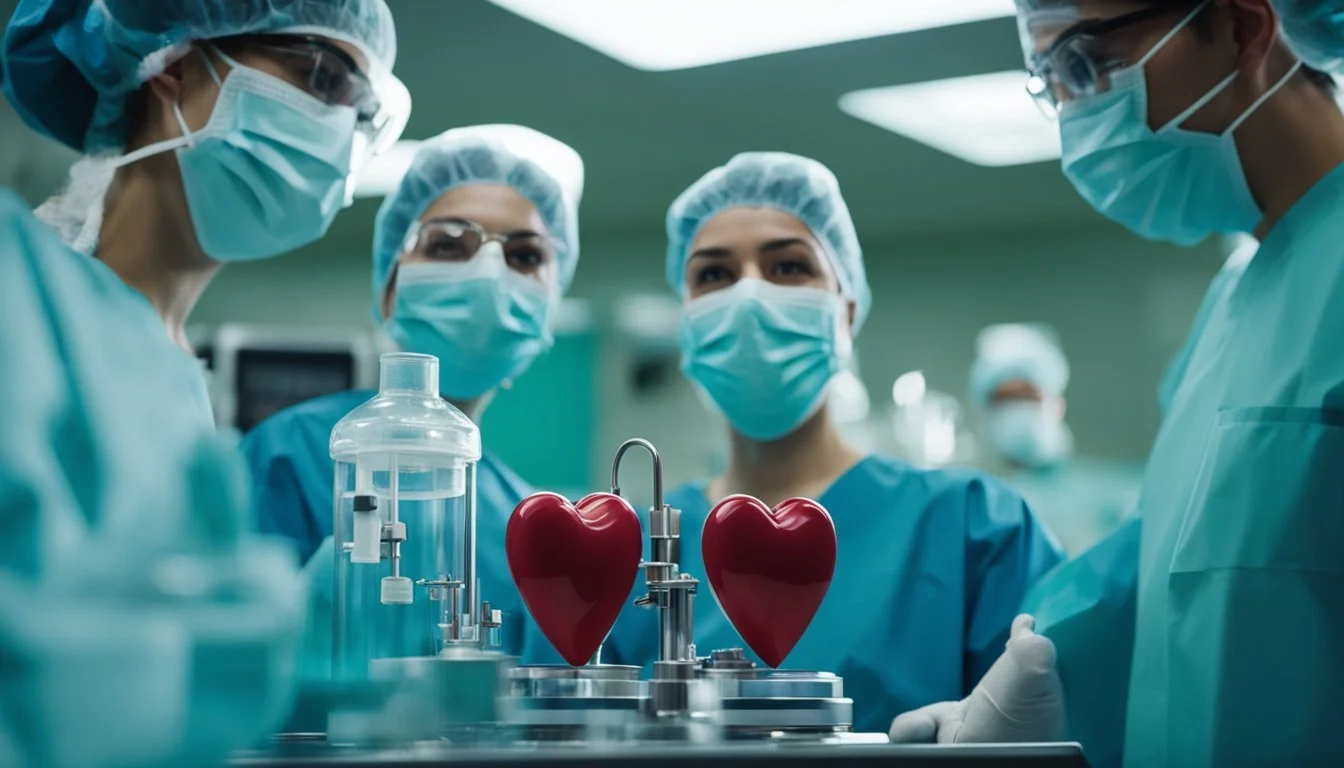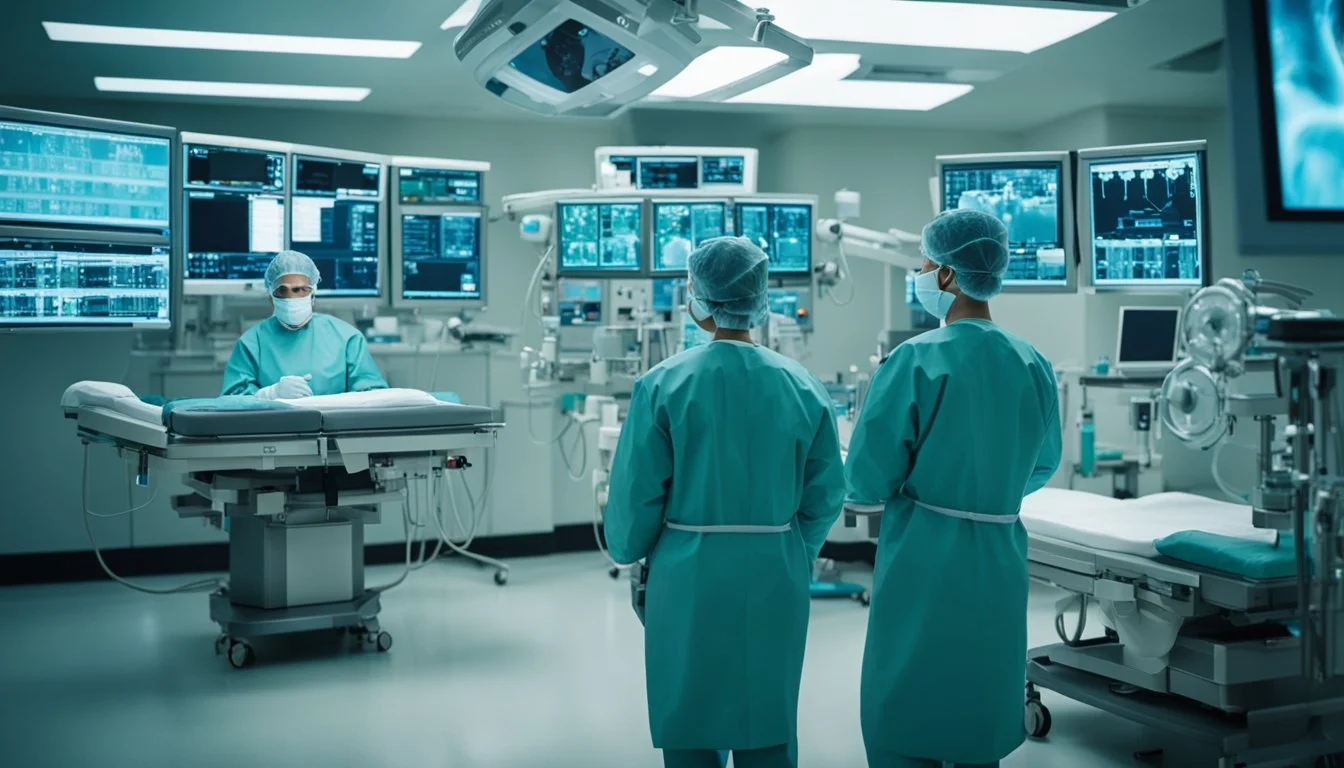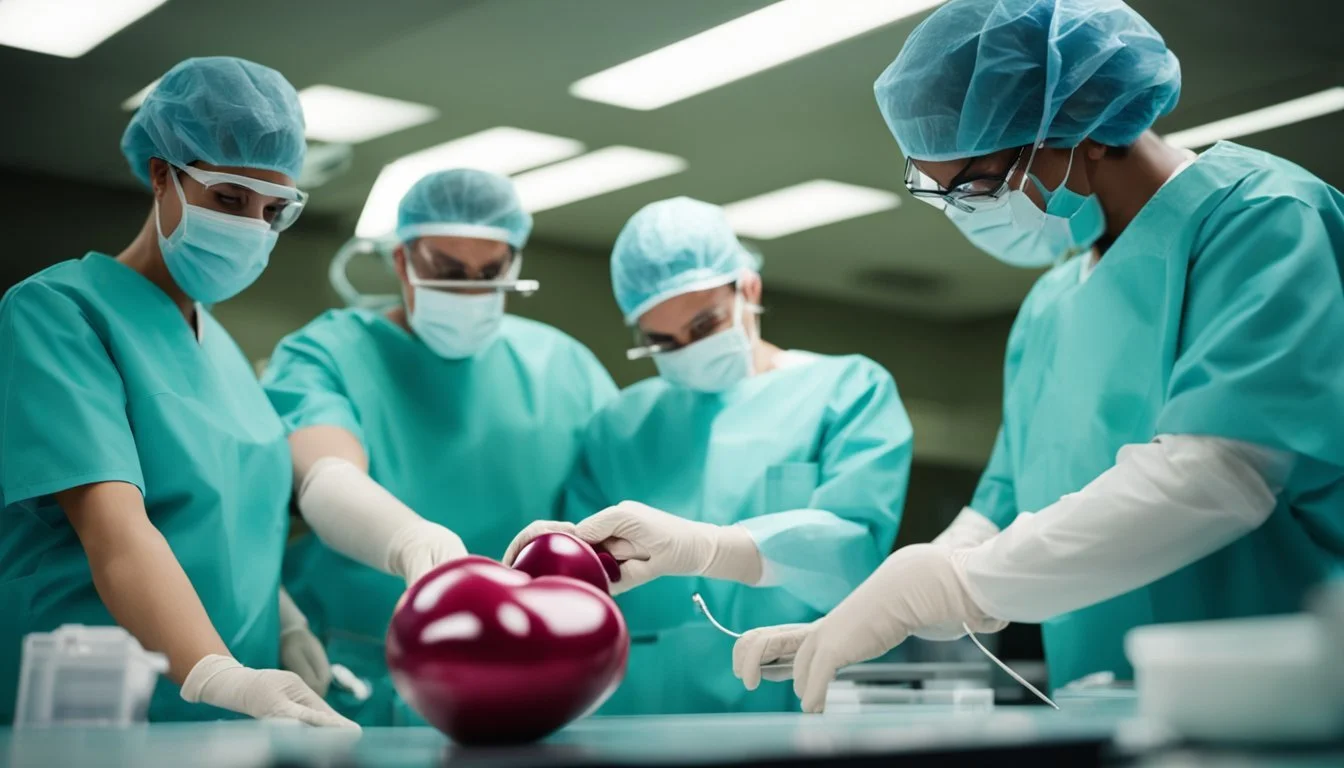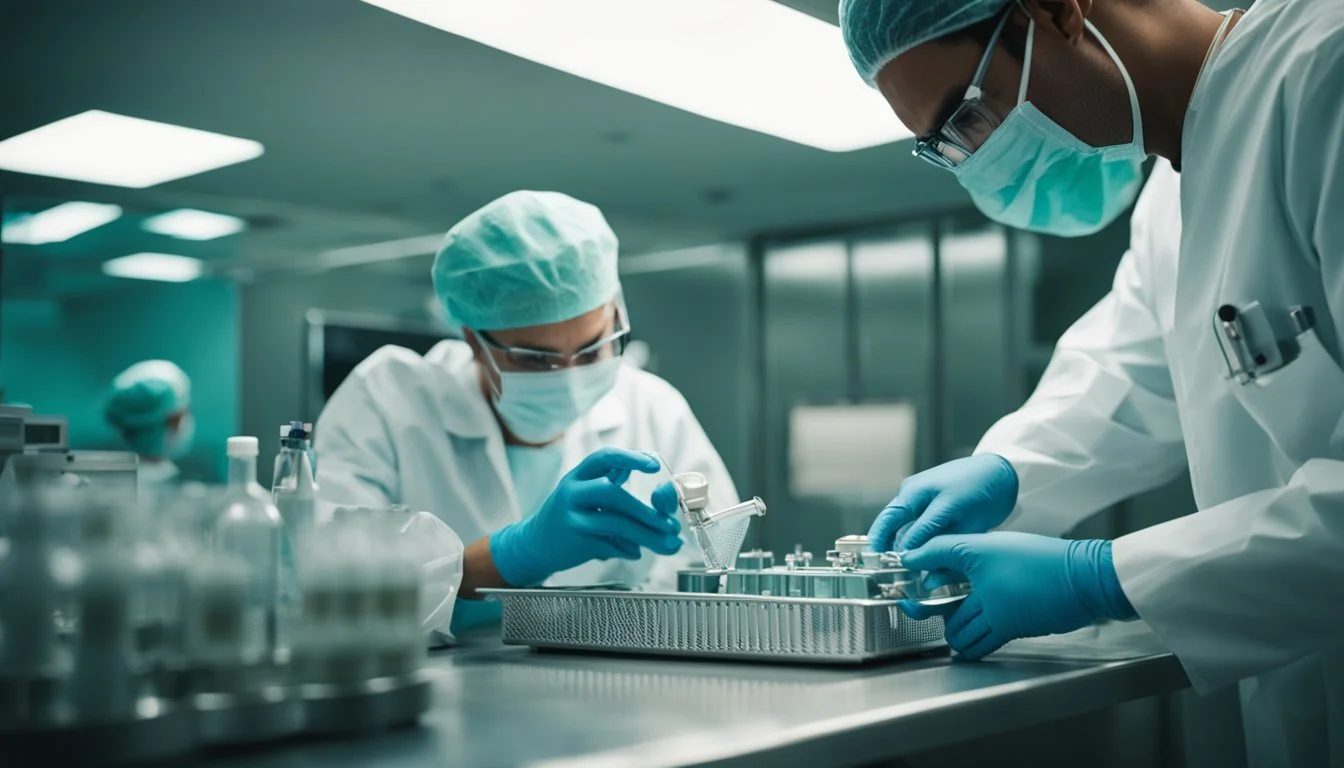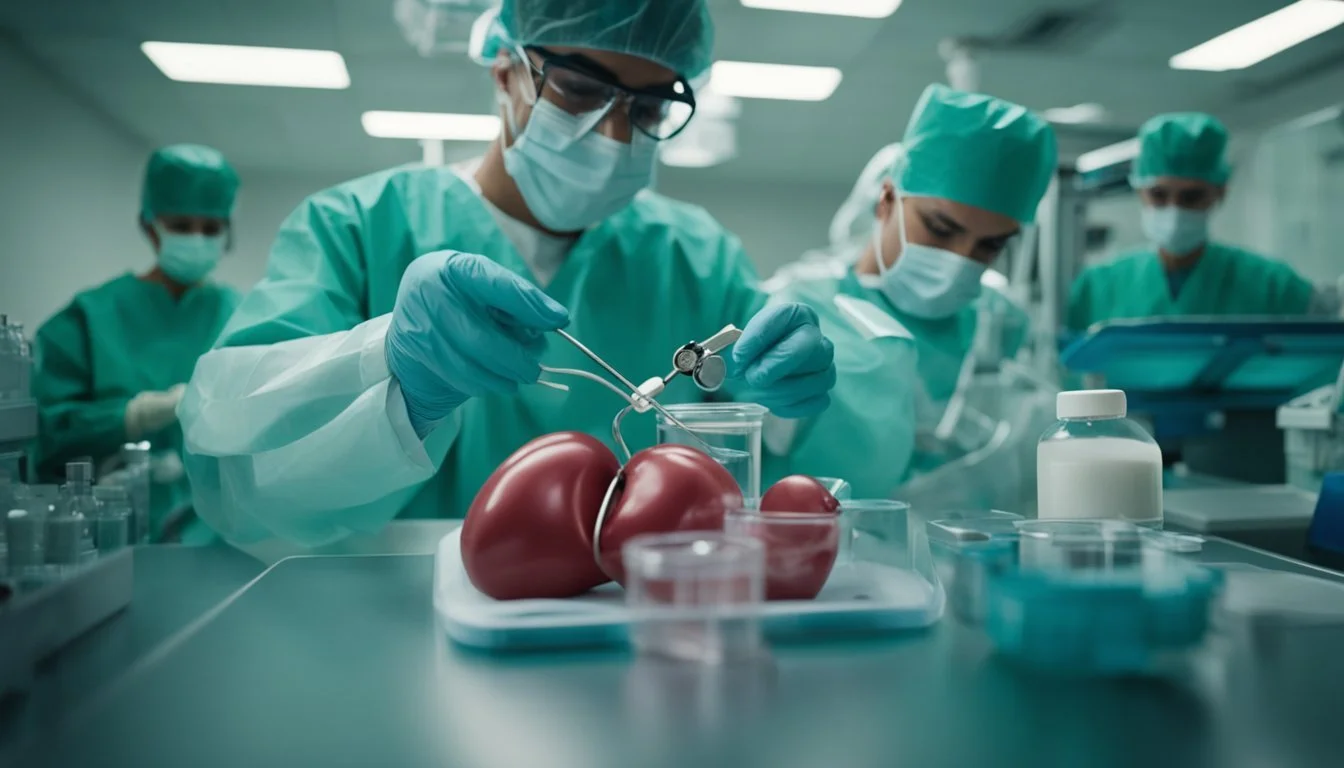7 Heart-Stopping Films on the First Successful Heart Transplant
Medical Milestones on Screen
The first successful human heart transplant marked a pivotal moment in medical history, captivating the world's attention and sparking intense ethical debates. This groundbreaking achievement has since been immortalized on film, allowing audiences to witness the drama, challenges, and triumphs surrounding this medical milestone.
These seven heart-stopping films offer viewers a unique glimpse into the high-stakes world of cardiac surgery, showcasing the dedication, skill, and human stories behind the first successful heart transplant. From fictionalized accounts to documentary-style retellings, each movie provides a different perspective on this remarkable feat of medical science, exploring the personal and professional lives of the surgeons, patients, and support staff involved in this historic event.
1) Hidden Heart (2008)
Hidden Heart explores the intertwined lives of surgeon Christiaan Barnard and technician Hamilton Naki against the backdrop of apartheid South Africa. The film delves into the first successful human heart transplant and the stark contrast between the two men's experiences.
Barnard achieved worldwide fame for his groundbreaking surgery, while Naki's crucial contributions remained largely unrecognized due to racial discrimination. The documentary sheds light on the injustice and inequality prevalent in the medical field during that era.
Through interviews and archival footage, Hidden Heart paints a nuanced picture of the historic transplant and its lasting impact on medical science. The film also examines the ethical implications of the procedure and its reception in South African society.
More information on Hidden Heart
2) Domino (2019)
"Domino" is a crime thriller directed by Brian De Palma. The film stars Nikolaj Coster-Waldau as Christian, a Copenhagen police officer seeking revenge for his partner's murder.
Set against the backdrop of international terrorism, the movie follows Christian's quest for justice. He teams up with a CIA agent played by Guy Pearce to track down the killer.
The film incorporates De Palma's signature visual style, including split-screen techniques and elaborate tracking shots. It explores themes of revenge, loyalty, and the complexities of modern counterterrorism efforts.
"Domino" received mixed reviews upon release. Critics praised De Palma's direction and the performances of the lead actors. However, some found the plot convoluted and the pacing uneven.
Despite its flaws, the film offers tense action sequences and compelling performances. It serves as an example of De Palma's continued exploration of thriller and crime genres in his later career.
More information on "Domino" (2019)
3) John Q (2002)
John Q is a gripping thriller that explores the lengths a desperate father will go to save his son's life. Denzel Washington stars as John Quincy Archibald, whose young son needs an emergency heart transplant.
When John's insurance won't cover the procedure, he takes drastic action. He holds the hospital emergency room hostage, demanding his son be put on the transplant list.
The film raises important questions about healthcare access and the ethics of organ donation. It portrays the anguish of parents facing impossible choices for their children's medical care.
Washington delivers a powerful performance as a man pushed to his breaking point. The supporting cast includes Robert Duvall, James Woods, and Anne Heche as hospital staff and law enforcement.
While dramatized for Hollywood, John Q sheds light on real issues in the U.S. healthcare system. It forces viewers to consider what they might do in a similar desperate situation.
More information on John Q (2002)
4) Awake (2007)
Awake explores the terrifying concept of anesthesia awareness during a heart transplant operation. Clay Beresford, a wealthy young man, requires a heart transplant and puts his trust in his friend and surgeon, Dr. Jack Harper.
On the operating table, Clay experiences anesthesia awareness - a rare condition where he remains conscious but paralyzed during surgery. Unable to communicate, he overhears a sinister plot involving his transplant.
The film delves into themes of medical malpractice, betrayal, and the vulnerability of patients under anesthesia. It stars Hayden Christensen as Clay, with Jessica Alba playing his wife Sam.
Awake uses the heart transplant procedure as a backdrop for a suspenseful thriller. While not strictly focused on the medical aspects, it raises questions about patient safety and trust in medical professionals.
The movie received mixed reviews but garnered attention for its intense premise and performances. It offers a unique perspective on heart transplant surgery, albeit through a dramatized lens.
More information on Awake (2007)
5) Seven Pounds (2008)
Seven Pounds is a drama film directed by Gabriele Muccino and starring Will Smith. The movie follows an IRS agent named Ben Thomas who embarks on an extraordinary journey of redemption.
Ben seeks to forever change the lives of seven strangers through acts of kindness and self-sacrifice. His mission is driven by a tragic secret from his past that haunts him deeply.
The film explores themes of guilt, atonement, and the power of human connection. Will Smith delivers a powerful performance as the tormented protagonist grappling with his choices.
Rosario Dawson co-stars as Emily Posa, a woman with a heart condition who becomes central to Ben's plan. Their developing relationship adds emotional depth to the story.
Seven Pounds received mixed reviews from critics but resonated with many viewers for its thought-provoking premise and emotional impact. The film's non-linear narrative keeps audiences guessing until the final reveal.
More information on Seven Pounds (2008)
6) Patch Adams (1998)
Patch Adams stars Robin Williams as the titular character, a medical student who believes laughter is the best medicine. The film is loosely based on the life of Hunter "Patch" Adams, a real doctor who pioneered the use of humor in patient care.
Set in the late 1960s and early 1970s, the movie follows Adams as he challenges traditional medical practices at his university. He forms deep connections with patients, often using unconventional methods to bring joy to their lives.
Williams delivers a heartfelt performance, balancing comedy and drama as he portrays Adams' journey from struggling student to compassionate doctor. The film also features strong supporting roles from Monica Potter and Philip Seymour Hoffman.
While not directly about heart transplants, Patch Adams explores themes of healing and the human spirit. It emphasizes the importance of treating patients as whole people, not just medical cases.
The movie received mixed reviews from critics but was a commercial success. It remains a popular example of medical drama blended with comedy.
More information on Patch Adams (1998)
7) The Kingdom (2007)
"The Kingdom" is an action thriller directed by Peter Berg. While not directly about heart transplants, the film touches on medical themes in a high-stakes international setting.
The story follows an FBI team investigating a terrorist attack on an American compound in Saudi Arabia. Jamie Foxx leads the cast as Special Agent Ronald Fleury, who must navigate cultural differences and political tensions.
Medical expertise plays a role in the investigation, with forensic analysis of bombing victims providing crucial clues. The film highlights the importance of advanced medical knowledge in solving complex crimes.
Though heart transplants are not a central focus, "The Kingdom" showcases the intersection of medicine, law enforcement, and international relations. It emphasizes how medical science can contribute to broader investigative efforts.
More information on The Kingdom (2007)
The Pioneers of Heart Transplantation
The first successful human heart transplant marked a pivotal moment in medical history. It required years of research, experimentation, and courage from dedicated surgeons and their teams to achieve this groundbreaking feat.
Dr. Christiaan Barnard and His Team
Dr. Christiaan Barnard, a South African cardiac surgeon, led the team that performed the world's first human-to-human heart transplant on December 3, 1967. The operation took place at Groote Schuur Hospital in Cape Town.
The recipient was 54-year-old Louis Washkansky, who received the heart of Denise Darvall, a young woman who had died in a car accident. Washkansky regained full consciousness after the surgery and could communicate with his wife.
Barnard's team included talented individuals like Hamilton Naki, a skilled technician whose contributions were often overlooked due to apartheid-era racial policies.
Early Experiments and Milestones
The road to successful heart transplantation was paved with numerous experiments and milestones. In the early 20th century, scientists began conducting heart transplant experiments on animals.
Dr. Norman Shumway and Dr. Richard Lower made significant advancements in the 1960s at Stanford University. They developed techniques for hypothermic cardiac preservation and improved surgical methods.
In 1964, Dr. James Hardy attempted the first human heart transplant using a chimpanzee heart, but the patient died shortly after.
These early efforts laid the foundation for Barnard's success and the subsequent development of heart transplantation as a viable treatment for end-stage heart failure.
Challenges and Breakthroughs
Early heart transplants faced significant obstacles. Surgeons had to overcome rejection issues and develop new surgical techniques to make the procedures successful.
Overcoming Immunological Rejection
Organ rejection posed a major hurdle in heart transplantation. The recipient's immune system often attacked the donor heart, leading to complications.
Doctors developed immunosuppressive drugs to combat this issue. Cyclosporine, introduced in the 1980s, greatly improved transplant success rates.
Newer medications like tacrolimus and mycophenolate further reduced rejection risks. These advancements allowed recipients to live longer with their new hearts.
Careful donor-recipient matching also became crucial. HLA typing helped find more compatible matches, decreasing the likelihood of rejection.
Technological Advances in Surgery
Surgical techniques evolved rapidly to improve transplant outcomes. The introduction of the heart-lung machine in the 1950s made open-heart surgery possible.
Better organ preservation methods extended the viability of donor hearts. This allowed for longer transport times between donor and recipient.
Minimally invasive procedures reduced surgical trauma and recovery times. Some centers now perform transplants through smaller incisions.
Improved monitoring tools helped detect rejection early. Endomyocardial biopsies and advanced imaging techniques allowed for prompt intervention.
Mechanical circulatory support devices, like ventricular assist devices, bridged patients to transplantation. These innovations gave critically ill patients more time to receive a donor heart.
Impact on Medical Science
The first successful heart transplant revolutionized cardiovascular medicine and opened new frontiers in organ transplantation. This groundbreaking procedure led to significant improvements in surgical techniques, immunosuppression, and patient care.
Long-Term Patient Outcomes
Early heart transplant recipients faced high mortality rates due to organ rejection and infections. As surgical methods and anti-rejection drugs improved, survival rates increased dramatically. By the 1980s, one-year survival rates reached 80%.
Today, heart transplant patients can expect to live 10-15 years on average post-surgery. Some recipients have survived over 30 years with their transplanted hearts.
Quality of life for transplant patients has also improved significantly. Many are able to return to work and resume normal activities within months of surgery.
Advancements in Post-Operative Care
The success of heart transplants spurred rapid advances in post-operative care. Doctors developed sophisticated protocols for monitoring and preventing rejection.
Endomyocardial biopsy became a standard technique for detecting early signs of rejection. This allowed for timely intervention with immunosuppressive drugs.
Improvements in immunosuppression medications reduced rejection rates and side effects. Cyclosporine, introduced in the 1980s, was a major breakthrough.
Better infection control measures helped reduce post-operative complications. Specialized cardiac care units were established to provide expert post-transplant management.
These advancements not only benefited heart transplant patients but also improved care for other organ transplant recipients.

